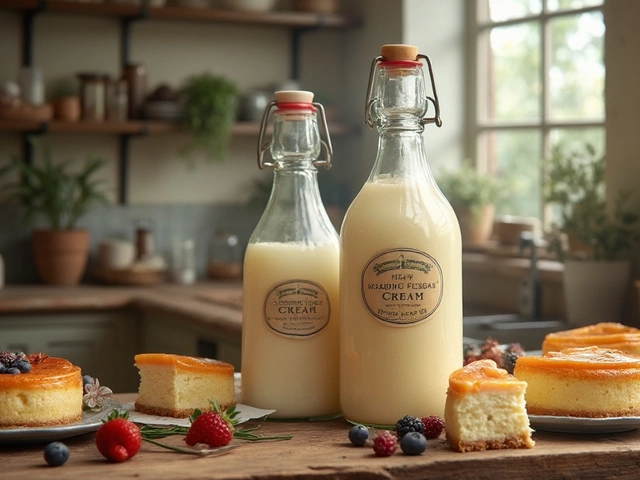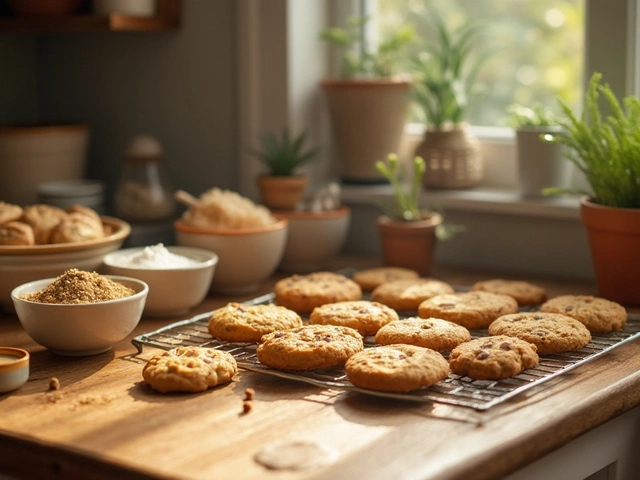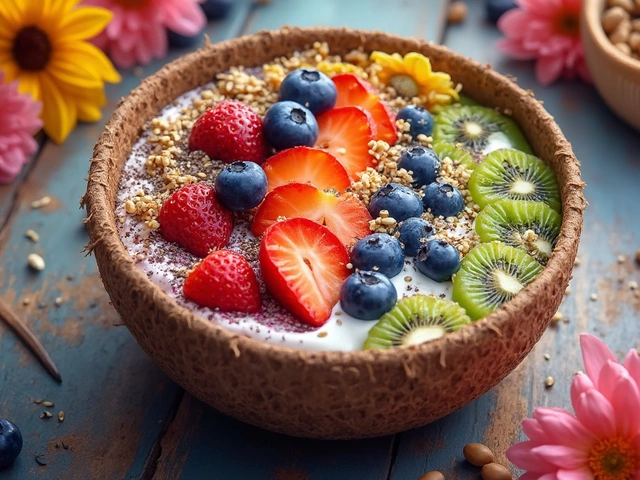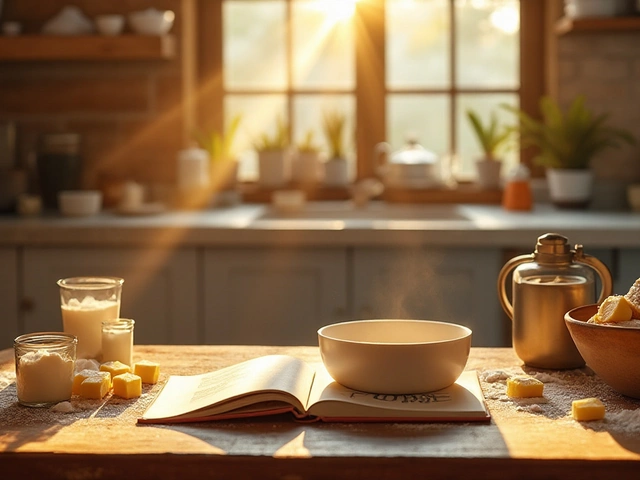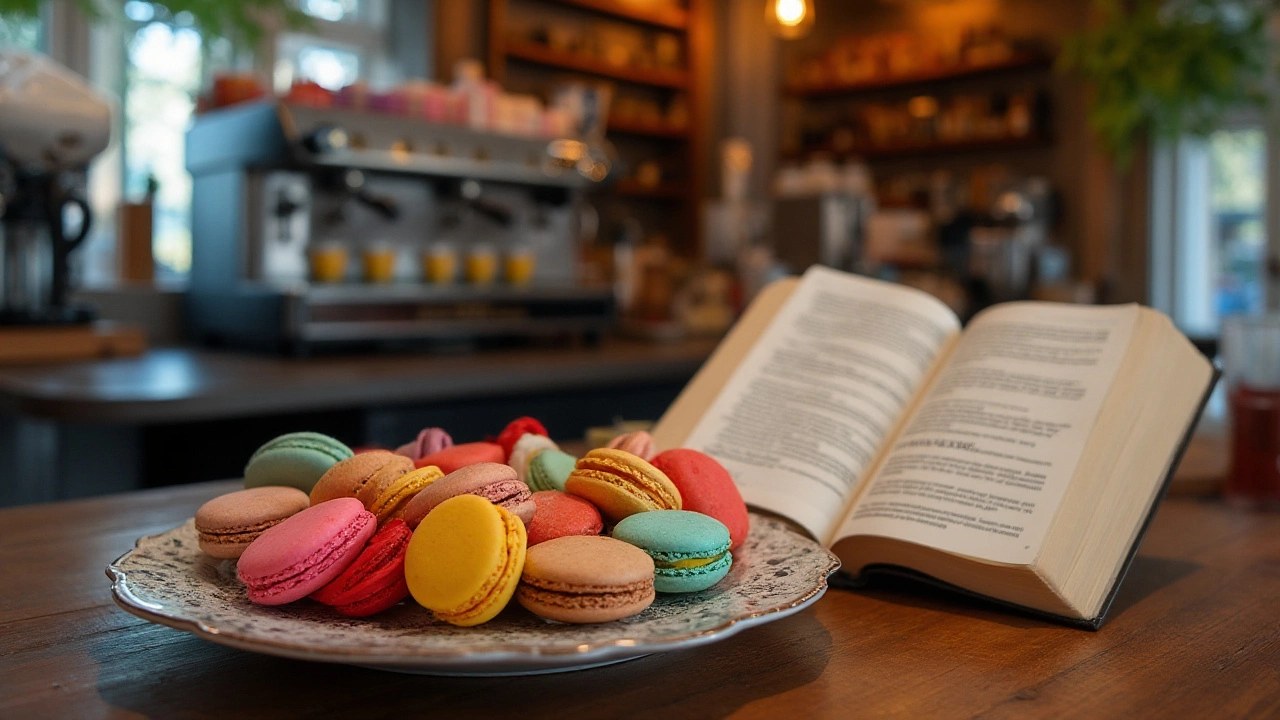
Macarons, the iconic, petite, and whimsically colored French pastries, have captured hearts all around the world. But let's shift our attention to a different question: how exactly do you pronounce 'macaron' if you're speaking Portuguese? It’s one of those delightful linguistic curiosities that food lovers and language enthusiasts find fascinating.
In Portuguese, the pronunciation shifts a bit compared to its French origins, reflecting the nuances of the language itself. For anyone enamored with these delicate treats, understanding this aspect can enrich your culinary experience. And beyond pronunciation, macarons have a rich tapestry of history and interesting tidbits that are worth uncovering.
Dive into the world of macarons as we explore pronunciation tips, fascinating facts, and the cultural significance this charming dessert holds in different parts of the world. Whether you are a lover of language or simply can't resist these sweets, there’s plenty to savor in this exploration.
- Introduction to Macarons
- Macaron Pronunciation in Portuguese
- Fascinating Macaron Facts
- Common Pronunciation Mistakes
- Cultural Context of Macarons
Introduction to Macarons
The macaron, that quintessentially French confection, is more than just a dessert; it’s a cultural icon. These dainty, pastel-hued confections are composed of two almond meringue shells filled with a luscious layer of ganache, buttercream, or jam. The crisp shell gives way to a chewy, delectable center, making each bite a harmonious blend of texture and flavor. Traditionally associated with French patisseries, macarons have a storied history that dates back centuries. The origin of the macaron is believed to trace back to Italy. Catherine de’ Medici, an Italian noblewoman who became the queen of France in the 16th century, introduced these cookies to the French palace. Over time, French chefs refined them into the delicate treats we savor today. They embody a perfect balance of almond flavor and a symphony of other notes ranging from vanilla to raspberry.
Macarons gained significant popularity in the 20th century, with Parisian patisseries elevating them to the height of elegance and glamour. Embellished with a kaleidoscope of colors and flavors, macarons have become synonymous with artisanal skill and culinary perfection. Ladurée and Pierre Hermé are among the esteemed names associated with groundbreaking macaron flavors, taking these little luxuries to global celebrity status. Speaking of flavors, macarons offer a vast array of choices—from classic vanilla, rich chocolate, and tart lemon to exotic combinations like rose lychee or matcha green tea. These variations are a testament to exceptional creativity and culinary experimentation. A macaron is not just a dessert; it is an artistic expression of taste and aroma.
Macarons have made their way beyond France, captivating dessert enthusiasts worldwide. Their popularity has soared, particularly in recent years, transforming them into a symbol of cosmopolitan indulgence. Cafés and bakeries from New York to Tokyo boast of freshly baked macarons, each offering distinct local twists that cater to diverse palates. Macaron facts are delightful, with the French notably celebrating 'Jour du Macaron' or Macaron Day, an annual event dedicated to enjoying and sharing these delectable bites—an event that has been embraced in various parts of the world. This surge in global popularity has also sparked debates on pronunciation—the most flavorful discourse being how different cultures adapt the French term 'macaron.' This dessert isn’t just about taste; it’s an experience and an exciting linguistic treasure hunt.
The macaron's allure lies equally in its sophisticated simplicity and complex preparation. Making them is a true labor of love, requiring precision and patience. The ingredients—egg whites, ground almonds, powdered sugar, and caster sugar—may seem straightforward, but they demand the perfect balance to achieve the desired consistency and flavor. The process involves whipping the egg whites to form stiff peaks, gently folding in the dry ingredients, and piping the glossy batter into small rounds. Then comes the critical step of 'macaronage,' the meticulous mixing that determines the fate of the macarons’ iconic feet, or ruffled skirt. It's a delicate dance of technique, and even seasoned bakers might struggle to perfect it.
“To me, the art of the dessert is a beautiful expression on the plate, and the macaron is its most masterful flourish.” – Pierre HerméYet, despite the challenges, lovers of this sweet delight continue to embrace the endeavor, driven by the satisfaction of crafting something so simple yet immensely pleasurable.
Macaron Pronunciation in Portuguese
Ah, the macaron! When indulging in these colorful treats, how you say their name may not affect the taste, but it does add a sprinkle of authenticity to your experience. In Portuguese, the word 'macaron' dances with its own rhythm. Typically, it's pronounced as 'mah-ka-ROHN', with an emphasis on the final syllable. This differs a bit from the French pronunciation, which is softer and slightly more nasal. The accent and intonation in Portuguese provide a unique twist, making it a delightful word to articulate, especially for those passionate about both language and cuisine.
This pronunciation reflects the Portuguese language's musicality, where the flow of words moves like the gentle waves along the Algarve coastline. The subtleties in pronunciation can vary slightly depending on whether you are in Portugal or Brazil due to the differences in regional dialects. Yet, the core pronunciation 'mah-ka-ROHN' remains largely recognizable across Portuguese-speaking regions. An interesting fact is that, just like in English-speaking countries, macarons in Portugal are often confused with macaroons, which are a completely different type of confectionery. This is a testament to the world of culinary linguistics, where delightful misunderstandings often lead to surprising discoveries.
Language expert Maria Silva notes, "The allure of borrowing words from one language to another lies in how they transform. 'Macaron' is no exception. In Portuguese, its sound is as delectable as its taste."
The journey of discovering the correct pronunciation of 'macaron' in Portuguese isn't just about phonetics. It's about immersing yourself in a culture where every word, and every sweet moment is valued. When visiting a patisserie in Lisbon, why not delight the shopkeeper with your knowledge of the word and share a moment of joy over your shared love for these scrumptious pastries? While words connect us, it’s these connections that enrich our travels, and in the world of food, bring us closer together, one dessert at a time.
Mentioning another key insight, it's also important to note that food names often retain their original language's charm, even as they adapt phonetically. So while you might say 'mah-ka-ROHN' in a shop in Porto, be ready for the possibility that a French chef could still lovingly correct you with a smile, "Macaron!" Such is the beauty of culinary lexicon—a perfect blend of precision and the joy of discovery.
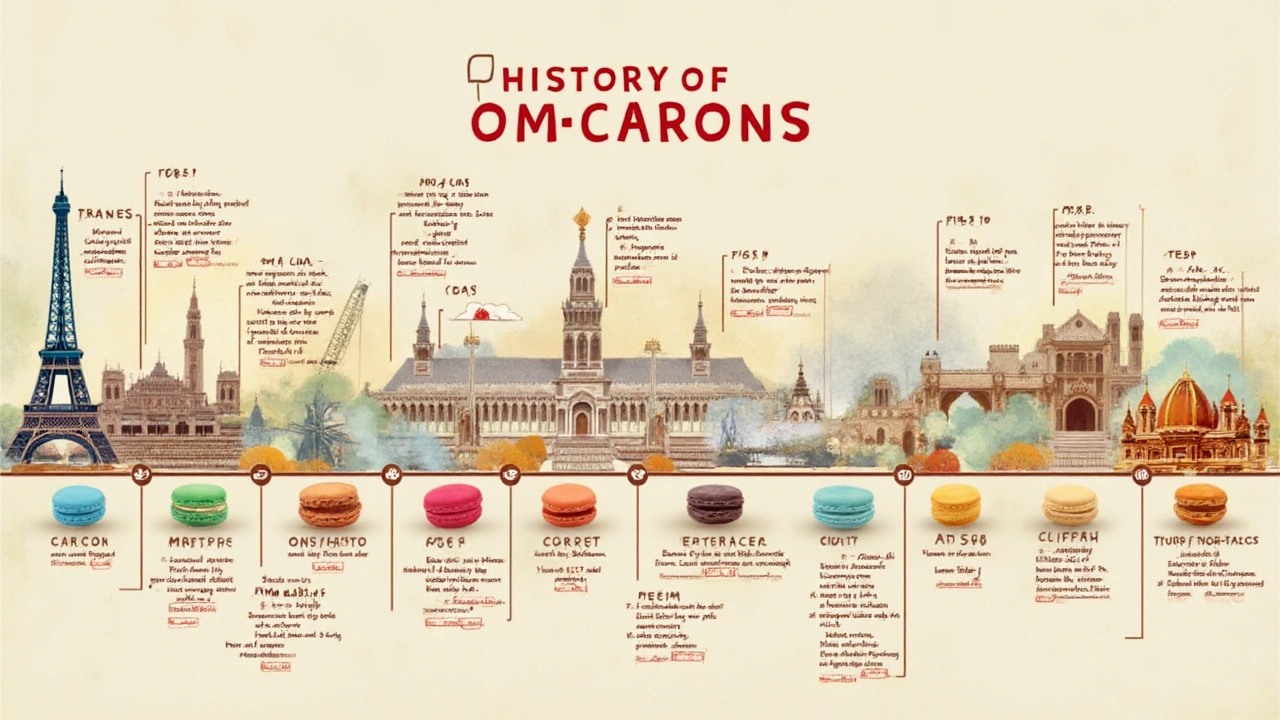
Fascinating Macaron Facts
The world of macarons is as vibrant and colorful as the confections themselves. These delightful pastries have a history that dates back centuries, hailing from Italy and making their debut in France during the Renaissance by way of Catherine de Medici's Italian pastry chefs. Today, they are the quintessential French dessert, but their humble beginnings tell a tale of evolution and cross-border culinary influences. When these sweet morsels first came into the limelight, they bore little resemblance to the brightly colored sandwich cookies we cherish now. Initially, they were simple almond meringue cookies, bare and unassuming, without the towers of ganache, buttercream, or jam filling we associate with modern macarons.
Another interesting tidbit lies in their complex making process. Crafting the perfect macaron is an art form itself, relying not just on precise measurements, but also on humidity, temperature, and even the method of whipping egg whites. It requires patience and skill, where bake time and cooking accuracy have to align splendidly to produce the desired “feet,” the ruffled edges found on a well-crafted macaron. A true testament to this meticulous craftsmanship comes from Ladurée, one of Paris's legendary tearooms and patisseries, credited with popularizing the macaron as we know it today. A visit there could be seen as a pilgrimage for any avid macaron enthusiast or culinary explorer.
If you've ever wondered about their colorful appearance, the answer lies within the realm of natural and food colorings added to the batter. Although macarons today can be found in myriad flavors, traditionally, they were mainly vanilla, chocolate, and raspberry. Now, one's imagination is the only limitation, as you can find macarons in bizarre yet delightful flavors like wasabi, foie gras, or even truffle. Different global influences have left their mark on the macaron scene, inspiring subtle variations that continue to delight and surprise the taste buds. It's not just about taste but also about the various textures and aromas that make every bite an experience of its own.
Macarons are not just a pastry but a global phenomenon that has established a presence on nearly every continent. From New York to Tokyo, and São Paulo to Sydney, these treats have become a culinary ambassador for French patisserie, celebrated in vibrant shops where pastry chefs continue to innovate and experiment with flavors and appearances. Occasionally, you may encounter local twists, where regional ingredients are incorporated into the classic recipe, lending new and exciting dimensions to this beloved confection.
Interestingly, the macaron has even sparked friendly culinary rivalries among chefs and foodies. Each year, contests and fairs bring together the best in the business to crown the finest in flavor and design. It's a testament to the enduring appeal and the ever-evolving love affair the world has with these delectable French pastries. There’s a celebratory spirit around these cookies, elevating them beyond mere desserts to treasures of artisan skill and gustatory delight. So, when next you indulge in a macaron, remember the journey it has travelled through time and across continents, bringing with it a taste of luxury and a dash of history.
Common Pronunciation Mistakes
When it comes to pronouncing macaron in Portuguese, there are a few common pitfalls that even the most culinary-savvy individuals can stumble into. One of the frequently encountered errors is confusing the term with “macaroon,” a distinctively different dessert. This confusion often arises due to similar spelling and sound in English but the two confections have different origins and composition. In Portuguese, 'macaroon' refers to a different delicacy than a French macaron, which is crucial for dessert enthusiasts to note.
Another mistake lies in the over-emphasis of the 'r' sound in the middle of macaron, something that Portuguese speakers might naturally do due to their native phonetic patterns. However, the correct articulation in Portuguese is much softer and closer to the French pronunciation—resembled by a soft 'h' rather than a rolled or hard 'r'. There's an artful subtlety in capturing the French flavor of the word while adapting to the Portuguese intonation.
Many Portuguese speakers may also mistakenly pronounce the 'a' in macaron as ah-kah-ron, utilizing a Brazilian Portuguese inclination to elongate or accentuate syllables in a more familiar, local fashion. To avoid this, think more along the lines of the French, perhaps practicing with a native speaker or listening to audio recordings for the proper inflection. Emphasizing syllables differently than in French is a usual cultural adaptation that results in slight variations, which unfortunately lead to confusion regarding the identity of the pastry.
An easy tip, shared by a French pastry chef, can help: “Consider saying 'mah-kah-rohn' allowing the final syllable to almost whisper into the air, reminiscent of the dessert's delicate crumble.” This insightful approach helps align one’s pronunciation closer to French sophistication while maintaining Portuguese fluency.
"A context to iterate from Les Anges Pâtissiers: Understanding the delicacy in pronouncing 'macaron' opens up linguistic flavors akin to tasting a perfect shell with a subtle filling.”
These are just the stepping stones to mastering macaron pronunciation in Portuguese. Practicing with peer language enthusiasts or indulging in the company of a French native on occasion could serve well. By avoiding these common missteps, not only do you honor the dessert's origins but also partake in a small cultural celebration, enriching both the dining and conversational experience about these delightful little pastries.
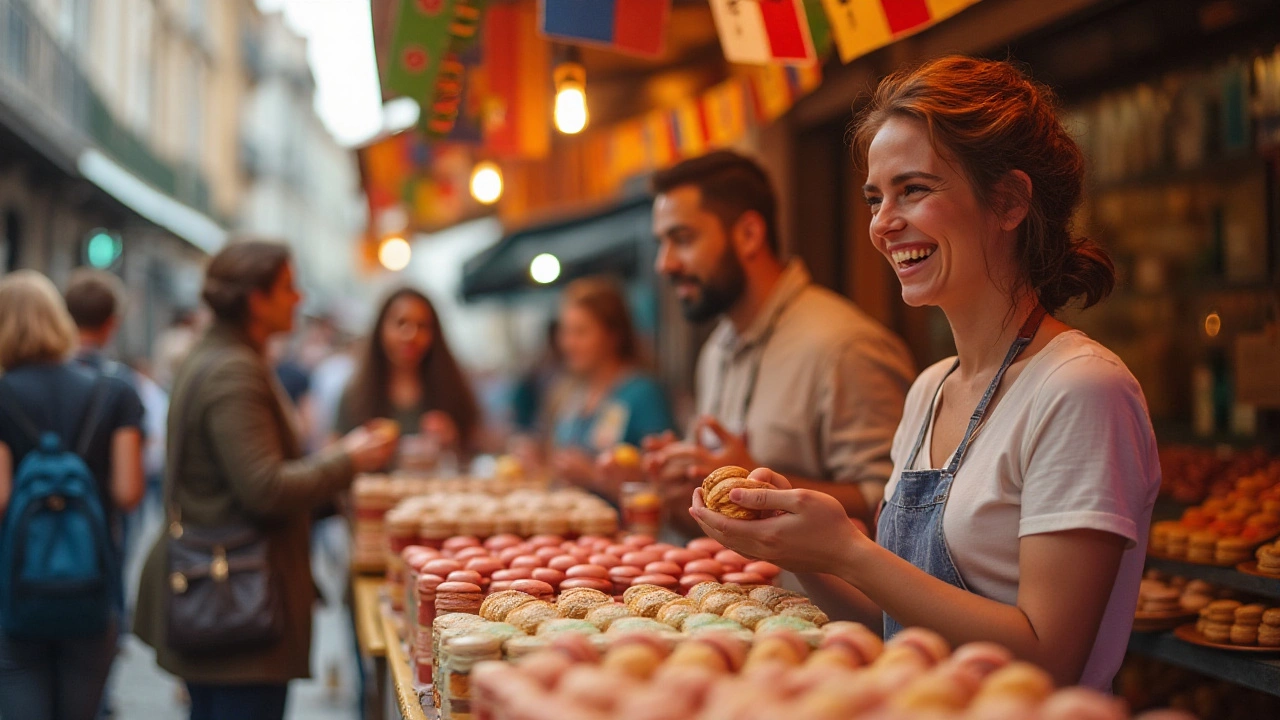
Cultural Context of Macarons
The shimmering allure of the macaron has transcended its French roots, making its way into cultural spectacles all over the globe. Historically, macarons are often associated with the opulence and grandeur of the French court, believed to have made their debut in France in the early 16th century. The story is quite charming: Catherine de' Medici is credited with bringing the recipe from Italy when she married Henry II of France. Over the centuries, this delicate pastry has not only become a quintessential part of French patisserie but has also made a significant mark on international culinary scenes. It’s a marvel how this little dessert has grown to symbolize French sophistication worldwide.
Despite its French heritage, the macaron’s appeal is universal, crossing borders and culinary traditions. Around the world, pastry chefs imbue it with local flavors, creating delightful blends like matcha in Japan, dulce de leche in Argentina, and pandan in Southeast Asia. Cultural adaptations not only reflect local taste preferences but echo a form of culinary nostalgia for many people. In a globalizing world, the adaptation and reinvention of the macaron illustrate a broader trend of hybridization in food culture, making it a canvas for both tradition and innovation. It’s a small pastry with enormous cultural versatility.
In Portugal, for example, macarons have been embraced as much as they are in other European countries. While not as emblematic as the ubiquitous pastel de nata, macarons are increasingly used in gourmet plating in high-end dining and as stylish elements in events and weddings. The Portuguese version may sometimes infuse traditional flavors such as port wine or cinnamon, which are classic staples in Portuguese desserts. This captures how cultures around the world adapt and incorporate the exquisite French confection into their own culinary identities.
The macaron’s cultural proliferation is also evident in its depiction in media and pop culture. From featuring prominently in reality TV cooking shows to playing muse for countless social media influencers and food bloggers, the macaron is a staple subject because of its vibrant colors and delicate beauty. Its photogenic nature keeps it at the epicenter of visual artistry in the culinary world. “To say that the macaron has become a symbol of the globalization of taste might be overstating it, but it's clear these colorful delicacies offer a taste of elegance that resonates with many,” noted culinary historian Alan Davidson.
Statistics suggest that macaron popularity has seen significant growth, particularly in countries with emerging middle classes who are increasingly seeking premium dessert experiences. Some data shows a consistent yearly increase in macaron sales worldwide, making it not just a flash in the pan but a substantive contender in the world of pastries. This is likely due to its perfect blend of sweetness and sophistication, aligning with the increasing global demand for gourmet foods that match modern tastes.

